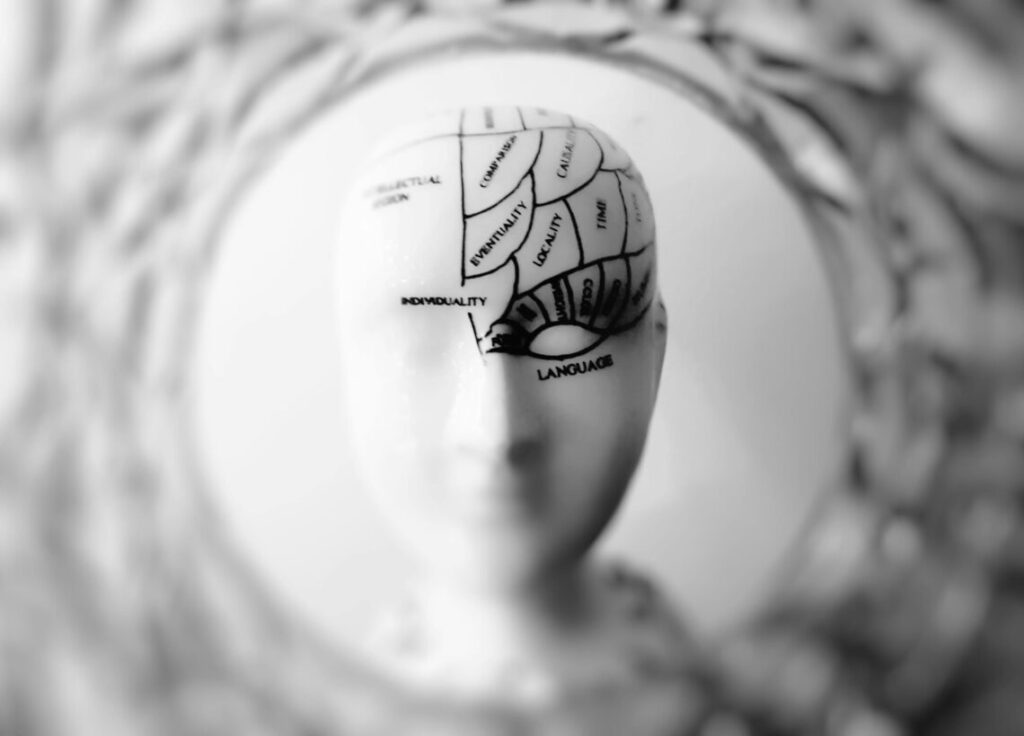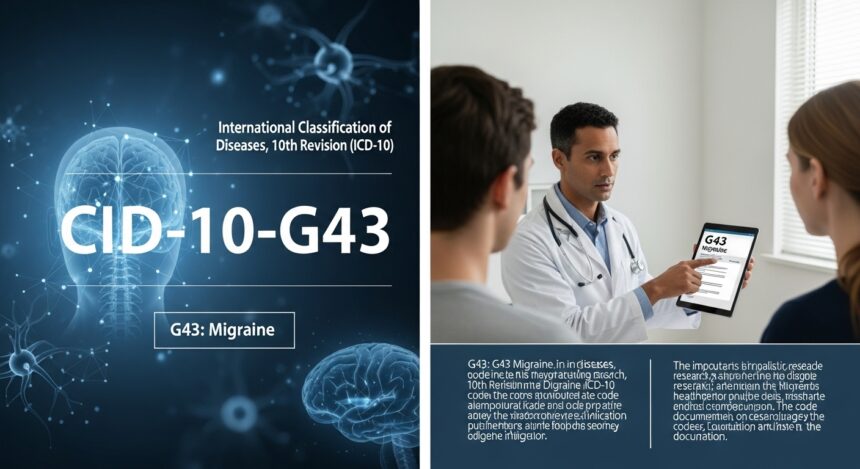The term Cid10g43 may sound complex, but it plays a major role in medical coding, diagnosis, and healthcare data systems. Understanding Cid10g43 is essential for healthcare professionals, patients, and researchers who deal with neurological conditions, especially migraine-related issues. In this comprehensive guide, we’ll explore what Cid10g43 means, how it’s used, its importance in diagnosis, and how it connects to migraine disorders.
- What Is Cid10g43?
- Why Is Cid10g43 Important?
- Breaking Down the Code Cid10g43
- Understanding Migraine Under Cid10g4
- What Causes Cid10g43 (Migraine)?
- How Is Cid10g43 Diagnosed?
- Treatment Options for Cid10g43
- The Impact of Cid10g43 on Daily Life
- Cid10g43 in Children and Teenagers
- Gender Differences in Cid10g43
- How Doctors Classify Cid10g43
- Cid10g43 and Mental Health
- Prevention Tips for Cid10g43
- Cid10g43 in the Global Healthcare System
- Cid10g43 and ICD-11: What’s Next?
- Common Myths About Cid10g43 (Migraine)
- When to See a Doctor for Cid10g43
- Living Positively with Cid10g43
- Conclusion: Why Cid10g43 Awareness Matters
What Is Cid10g43?
The code Cid10g43 comes from the ICD-10 (International Classification of Diseases, 10th Revision). It refers to Migraine, a neurological condition characterized by recurring headaches often accompanied by nausea, vomiting, and sensitivity to light or sound.
The “CID” in Cid10 g43 stands for “Classificação Internacional de Doenças” — the Portuguese term for the International Classification of Diseases (ICD).
So, in simple terms, Cid10g43 = ICD-10 code for migraine.
Migraine is a condition that affects millions of people worldwide, and having an official code like Cid10 g43 helps standardize diagnosis and treatment across hospitals, insurance systems, and healthcare databases.
Why Is Cid10g43 Important?
The code Cid10 g43 serves multiple essential purposes in healthcare:
- Accurate Diagnosis:
Doctors use Cid10 g43 to identify migraine cases correctly. - Data Recording:
It allows hospitals and clinics to record migraine data consistently. - Insurance & Billing:
Insurance companies use Cid10 g43 for claims related to migraine treatments. - Global Standardization:
Since ICD-10 is used worldwide, Cid10 g43 ensures that migraine cases are classified the same way globally. - Research and Statistics:
Scientists studying headaches and neurological conditions rely on Cid10 g43 data to track patterns, triggers, and outcomes.
Breaking Down the Code Cid10g43
The Cid10 g43 code specifically refers to Migraine. But within ICD-10, there are subcategories that provide more detail. Here’s how it breaks down:
- G43.0: Migraine without aura
- G43.1: Migraine with aura
- G43.2: Status migrainosus (a severe and long-lasting migraine)
- G43.3: Complicated migraine
- G43.4: Hemiplegic migraine
- G43.5: Retinal migraine
- G43.6: Persistent migraine aura without infarction
- G43.7: Chronic migraine
- G43.8: Other migraine
- G43.9: Migraine, unspecified
Each of these falls under the main Cid10 g43 classification.
So, if a doctor diagnoses a patient with a chronic migraine, they would use Cid10g43.7.
Understanding Migraine Under Cid10g4
Migraine is not just a headache — it’s a neurological disorder. People affected by Cid10 g43 (migraines) experience recurring attacks that can last for hours or even days.
Symptoms of Migraine (Cid1 0g43)
The symptoms may vary from person to person but generally include:
- Throbbing pain (usually on one side of the head)
- Sensitivity to light, sound, or smell
- Nausea or vomiting
- Vision disturbances (aura)
- Fatigue or dizziness
- Difficulty concentrating
These symptoms make Cid10 g43 one of the most disabling neurological disorders in the world.
What Causes Cid10g43 (Migraine)?
The exact cause of Cid10 g43 migraines isn’t fully understood, but research points to a combination of genetic, environmental, and neurological factors. Common triggers include:
- Stress and anxiety
- Hormonal changes (especially in women)
- Irregular sleep patterns
- Certain foods (like chocolate, cheese, or caffeine)
- Bright lights or loud noises
- Skipping meals
- Weather changes
Understanding and avoiding these triggers can significantly reduce Cid10 g43 episodes.
How Is Cid10g43 Diagnosed?
Doctors diagnose Cid10 g43 using the patient’s medical history, symptoms, and sometimes imaging tests to rule out other conditions. Key diagnostic steps include:
- Symptom Review:
Checking the frequency, duration, and type of headaches. - Physical & Neurological Examination:
To ensure there’s no underlying condition causing the headaches. - Imaging Tests:
MRI or CT scans may be used to exclude other brain abnormalities.
Once confirmed, the Cid10 g43 code is recorded in the patient’s medical file for reference and treatment planning.
Treatment Options for Cid10g43
The management of Cid10 g43 depends on the severity and frequency of migraine attacks. Treatment aims to relieve symptoms, prevent future attacks, and improve the patient’s quality of life.
1. Medications
There are two main types of medications used for Cid10 g43:
- Abortive (Acute) Treatments:
These stop migraines once they begin.
Examples include triptans, ergotamines, and NSAIDs. - Preventive (Prophylactic) Treatments:
These reduce the frequency of attacks.
Examples include beta-blockers, antidepressants, and anti-seizure drugs.
2. Lifestyle Modifications
Patients can manage Cid10 g43 by making small lifestyle changes such as:
- Maintaining regular sleep schedules
- Managing stress with yoga or meditation
- Staying hydrated
- Avoiding trigger foods
- Exercising regularly
3. Alternative Therapies
Some people find relief from Cid10 g43 using natural or complementary approaches:
- Acupuncture
- Biofeedback
- Massage therapy
- Magnesium and vitamin B2 supplements
The Impact of Cid10g43 on Daily Life
Living with Cid10g43 can affect personal, professional, and social life. Chronic migraines can lead to:
- Missed work or school days
- Decreased productivity
- Anxiety or depression
- Financial strain from medical expenses
That’s why understanding and managing Cid10 g43 is essential not only medically but also emotionally and socially.
Cid10g43 in Children and Teenagers
Migraine (Cid1 0g43) isn’t limited to adults — it can also affect children and teens. Pediatric migraines may be harder to diagnose since kids can’t always describe their symptoms clearly. Common signs include:
- Frequent abdominal pain
- Irritability
- Dizziness or fatigue
- Sensitivity to light
Early diagnosis and management of Cid10g 43 in children can prevent it from worsening in adulthood.
Gender Differences in Cid10g43
Research shows that Cid10 g43 affects women more than men, primarily due to hormonal changes. Many women experience migraines during:
- Menstruation
- Pregnancy
- Menopause
These hormonal fluctuations make managing Cid10 g43 more challenging for women. Understanding these patterns helps in developing personalized treatment plans.
How Doctors Classify Cid10g43
Medical professionals often use Cid10 g43 alongside other diagnostic tools to categorize migraine types. The classification helps determine treatment strategies and track patient progress. The main categories include:
- Migraine with Aura (Cid10 g43.1)
Visual or sensory disturbances before the headache phase. - Migraine without Aura (Cid10 g43.0)
Classic migraine with severe pain but no warning signs. - Chronic Migraine (Cid1 0g43.7)
Headaches occurring more than 15 days a month. - Status Migrainosus (Cid1 0g43.2)
Prolonged migraine lasting over 72 hours.
Each type under Cid10g43 requires a slightly different treatment approach.
Cid10g43 and Mental Health
There is a strong connection between Cid1 0g43 and mental health disorders. Studies show that migraine patients often experience:
- Depression
- Anxiety
- Sleep disorders
- Panic attacks
Chronic pain can impact mood, and mood disorders can, in turn, worsen Cid1 0g43 symptoms — creating a difficult cycle to break.
Prevention Tips for Cid10g43
While Cid1 0g43 cannot always be completely prevented, these strategies can reduce the risk of attacks:
- Keep a migraine diary to track triggers.
- Eat balanced meals at regular times.
- Get enough rest and sleep.
- Manage stress effectively.
- Limit caffeine and alcohol.
- Exercise moderately.
- Avoid overusing pain medications.
These steps can make a big difference for people living with Cid1 0g43.
Cid10g43 in the Global Healthcare System
The World Health Organization (WHO) included Cid1 0g43 in the ICD-10 to ensure consistency in diagnosis worldwide. This allows:
- Easier exchange of medical data
- Better healthcare planning
- Improved understanding of neurological disorders
As healthcare systems move toward digitalization, Cid1 0g43 remains a cornerstone in electronic health records.
Cid10g43 and ICD-11: What’s Next?
With the release of ICD-11, the classification for migraine has become even more detailed. However, Cid 10g43 continues to be widely used in medical billing, reporting, and research due to its simplicity and recognition.
Common Myths About Cid10g43 (Migraine)
- Myth: Migraine is just a bad headache.
Fact: Cid1 0g43 represents a complex neurological disorder, not a simple headache. - Myth: Only women get migraines.
Fact: While women are more affected, men can also experience Cid1 0g43. - Myth: You can cure migraine completely.
Fact: There’s no permanent cure for Cid10 g43, but treatments can control it effectively. - Myth: Painkillers are enough.
Fact: Overusing painkillers can make Cid10 g43 worse over time.
When to See a Doctor for Cid10g43
If you experience frequent or severe headaches, it’s important to consult a healthcare professional. You should seek medical attention if:
- Headaches last more than 3 days
- You experience vision or speech problems
- Pain is accompanied by fever or stiff neck
- Over-the-counter drugs no longer help
Getting an accurate Cid10g43 diagnosis ensures you receive the best treatment plan.
Living Positively with Cid10g43
Living with Cid10g43 can be challenging, but it’s manageable with the right support. Here are some tips:
- Join migraine support groups.
- Educate friends and family about Cid10g43.
- Follow a treatment plan consistently.
- Stay hopeful — new treatments are emerging every year.
With awareness, discipline, and care, people can lead full, active lives despite Cid10g43.

Conclusion: Why Cid10g43 Awareness Matters
The ICD-10 code Cid10g43 represents more than just a medical label — it’s a gateway to better understanding, diagnosis, and treatment of migraines. By spreading awareness and knowledge about Cid10g43, we empower both patients and healthcare professionals to take action against one of the world’s most common yet misunderstood disorders.
Whether you’re a patient, doctor, or researcher, understanding Cid10g43 helps you appreciate how deeply migraines can affect health, productivity, and quality of life. The more we learn about Cid10g43, the closer we move toward better care, management, and — hopefully — prevention.











